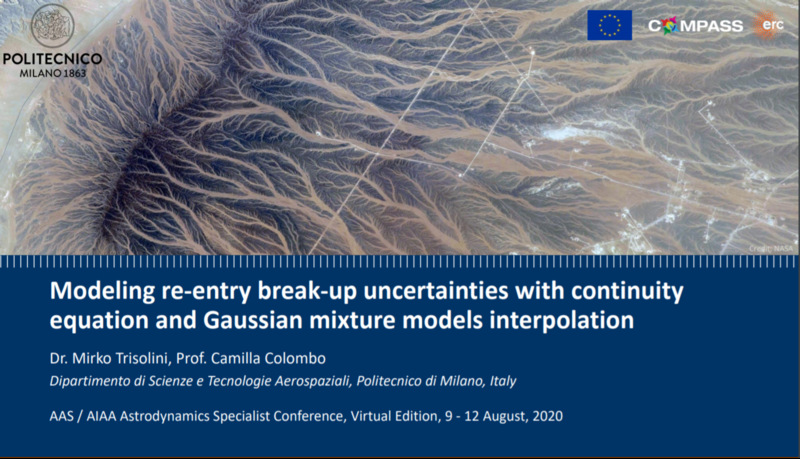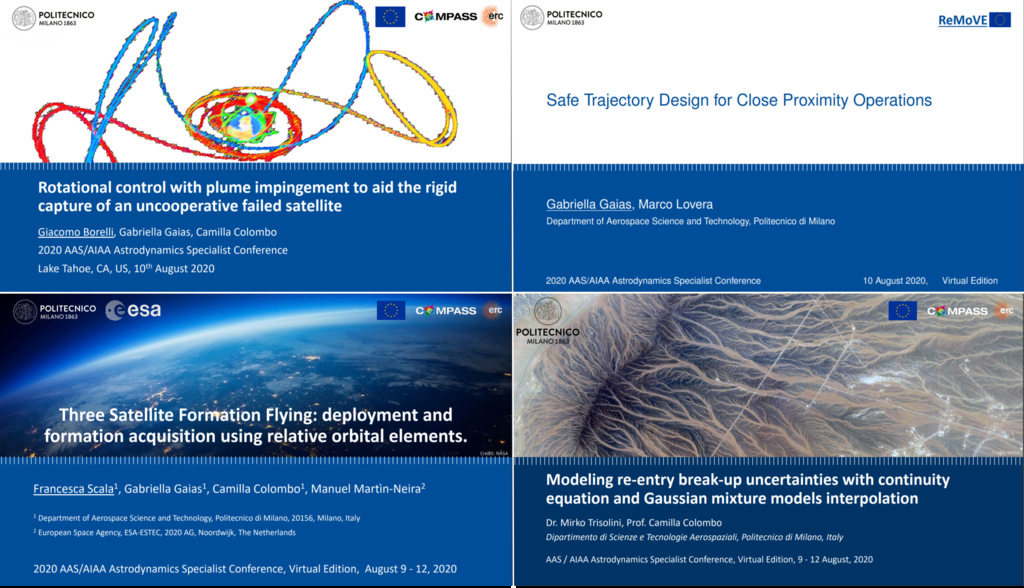The COMPASS team attended the 2020 AAS/AIAA Astrodynamics Specialist Virtual Lake Tahoe Conference, held virtually, due to the Covid-19 pandemic, from 9th to 12th August 2020.
This conference is organized annually by the American Astronautical Society (AAS) Space Flight Mechanics Committee and co-sponsored by the American Institute of Aeronautics and Astronautics (AIAA) Astrodynamics Technical Committee. The latest results related to space-flight mechanics and astrodynamics are presented by researchers from all over the world.
The COMPASS team presented recent developments in the fields of astrodynamics, space debris, and re-entry modelling. The conference program and abstracts are available at https://bit.ly/348xYuM. Giacomo Borelli presented the latest results on the rotational control of a failed satellite in the context of an active debris removal service for small class satellites of large LEO constellations. The control algorithms are developed considering different control objectives, based on the rotational states required to facilitate the forced motion final approach and capture phases.
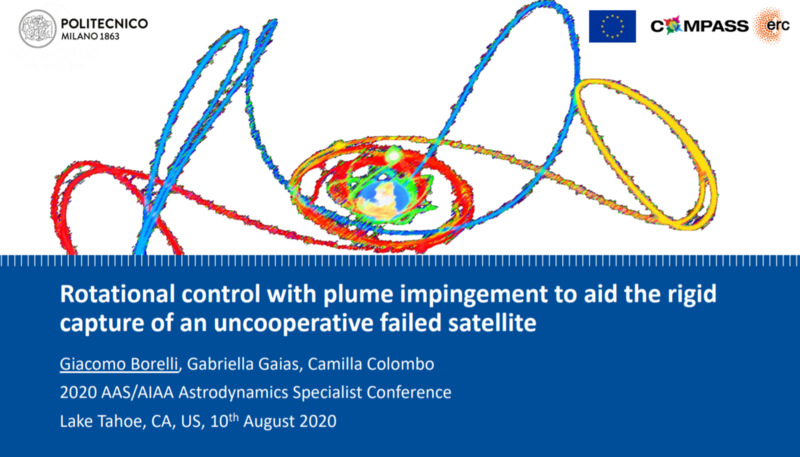
Gabriella Gaias presented the design of safe relative trajectories to enable satellite close proximity operations for a variety of multi-satellite missions. Her work provides guidelines and methodologies to compute relative trajectories applicable to different mission scenarios, considering the optimality in the location of the manoeuvres and safety considerations.
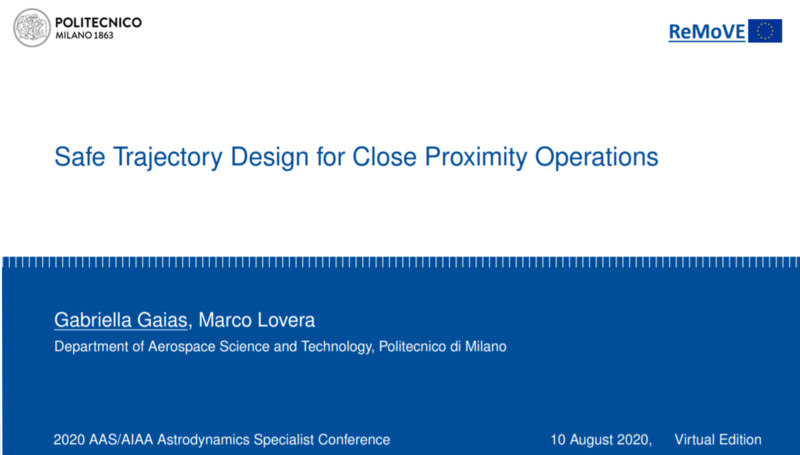
Francesca Scala presented the analysis for the deployment and the acquisition procedures for a three-satellites formation flying, on a sun-synchronous orbit, as part of a European Space Agency mission for land and ocean applications. The methodologies for formation-flight establishment and reconfiguration manoeuvres are presented, with a low-thrust control profile.
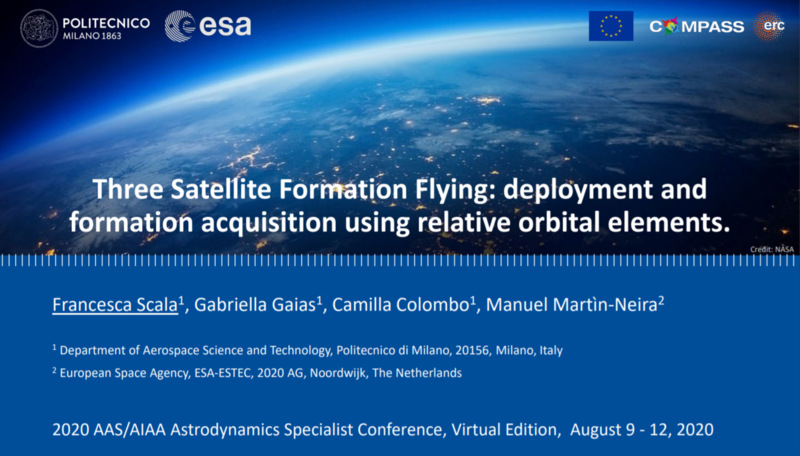
Finally, Mirko Trisolini presented the effect of uncertainties in the re-entry and break-up of satellites. The study performs a statistical analysis, describing the uncertainties and the break-up event through probability distributions, propagates them through a continuum approach, and reconstructs the uncertainties at future states using Gaussian mixture models fitting.
